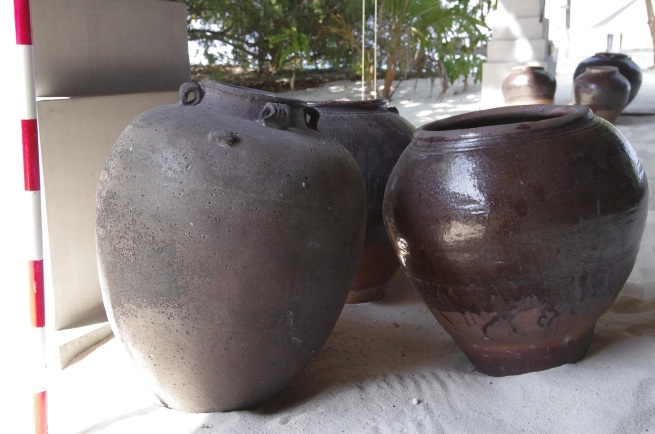On the island of Maamigili on the western side of Raa atoll is a resort which, as well as the usual Maldivian offerings of white beaches, greenery and beach villas, highlights the archaeological materials that were discovered when the resort was developed. It operates a museum under licence from the Maldivian Department of Heritage and it also showcases fine art and ethnographic materials. This includes a traditional house, salvaged from the island of Kandholhudhoo which was devastated in the 2004 tsunami.
We had been asked to go over to record, clean, and advise on the remains. These include two bathing tanks (vevu) made of sandstone blocs (veliga), coralstone grave markers, and at least three quadrilinear coralstone structures resembling tombs. All this lies in the central area of the island where no resort development has taken place, but routine works elsewhere on the island (plumbing, etc.) regularly uncover pottery and other past remains.
We were shown around by the collections manager, Niyaz, and given a tour of the displays situated in the entrance lobby
Ethnographic pots – bought from Sri Lanka – at the right, archaeological pot at the left

This also gave us an opportunity to study some of the 120kg of cowries that had been recovered at the site.
A group of visitors, very interested in the Buddhist connections














Thank you Bruce for this mention of our work. We have a paper coming out shortly about our work in the Maldives and we plan to return to the islands in 2017.